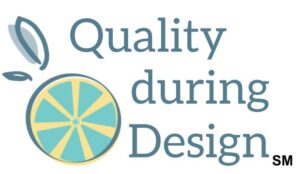Congratulations!
You've completed the Fast Track of the Quality during design Journey.
Our goal was to learn how Quality Tools can help us with team exploration of the use space.
Let's take a look at where we've gone through the Fast Tracks.
You learned about analyzing the concept space for design inputs with your cross-functional team in working meetings.
- Broke out benefits into features and impact and explored their drivers as design inputs.
- Prioritized features by customer satisfaction and the level of design implementation needed to meet that customer satisfaction.
- Developed group discussions to explore potential risks in product concepts using the symptom break-out model.
- Drew a process flowchart of the high-level functions of a product’s use for team alignment and to explore hidden needs.
- Evaluated the use process to discover what is critical to quality, value-added, or to understand multiple customers.
- Used diagrams to get alignment about ideas, ask specific questions of them to get design inputs, and design for all the customers (internal and external).
These steps help you to:
- Develop group discussions to explore potential benefits in product concepts as a means of design input.
- Define design priorities and actions against customer satisfaction and quality characteristics; identify what features and inputs are critical to motivation, satisfaction, and quality.
- Write technical design inputs that are aligned with features, their benefits, their use, customer satisfaction, and risk
- Develop group discussions to evaluate users, their potential use processes, and tasks at concept development as a means of design input.
All this is to get easier buy-in with the team on engineered solutions and products and to help us toward design for excellence (DfX).
You can learn how to take what you learned in these working meetings to the next level:
- Construct a tree diagram to explore drivers, from features to design characteristics/inputs.
- Refine design inputs by comparing them against desired features and each other using a matrix.
- Create design inputs from a task analysis of use errors using a PCA (perception-cognition-action) model so you can choose features and design inputs to address use errors.
- Feed initial risk analyses into hazards analysis and/or FMEA to further help with design decisions.
Contact Dianna if you want to take the next steps!
Download your Certificate of Completion!
Complete all the objectives!
Once you do, there will be a button that will show here so you can download your custom certificate.
[progressally_interaction interaction_id="3"]
Your Feedback is Important to Us!
[activecampaign form=65 css=1]
Fast Track Conclusion
Objectives


